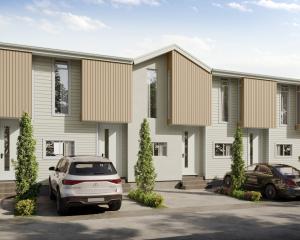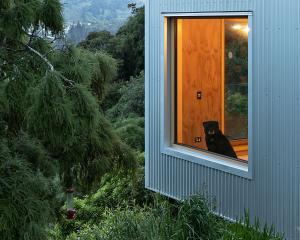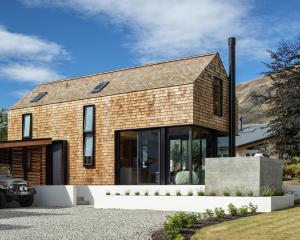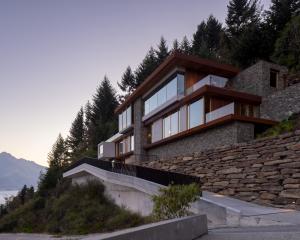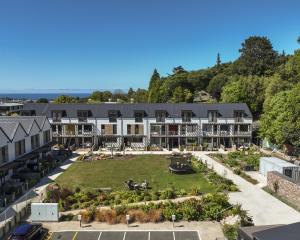
A confluence of elements, all of them drawn from the local environment and its history, have informed the design of a low-tech, low-footprint tourism destination in Glenorchy.
The Great Glenorchy Alpine Basecamp is a contemporary encampment with elements of luxury and a UNESCO heritage site at its doorstep – a dream for local and international visitors seeking a taste of the rugged south, the adventure it offers and the spirit it embodies.
The architecture refers to the historic mustering, tramping and miners’ huts that fleck the Glenorchy hills, says the architect behind the project, Rich Naish of RTA Studio. The concept of an encampment of these rudimentary forms became the basis of the project and its typology. Naish’s research into the area unearthed plenty of reference points to work with and took him back to childhood days of holidaying at a humble bach built by his grandparents at Lake Hāwea.

With so much history and personality to draw from, telling a story of authenticity through design was never going to translate into the international-style of hotel offering found in places such as Queenstown. The intent here was to create a welcoming and comfortable base for visitors to explore the mighty landscape, then return after a day of adventure to regale stories of their adventure while sitting around the campfire. In telling an authentic, local narrative through architecture, Naish wanted to create a place that would foster the life-changing memories that only nature can inspire.

“It’s not just about a collaboration between RTA and Bureaux, it’s about collaborating with the client and, via the client, the community,” says Naish. Working with local artists lead to details that reiterate the narrative, bookending the storytelling for visitors. It’s also a message that has translated into accolades for the practice.


In November, the project won three awards at the 2023 New Zealand Architecture Awards, the industry’s leading event held annually by Te Kāhui Whaihanga New Zealand Institute of Architects. The jury cited the Great Glenorchy Alpine Basecamp as ‘a beautifully understated and well-executed project that meets the intent and more.’
Internationally, the hospitality site is shortlisted in two categories at the World Architecture Festival, which will be announced in Singapore on 1 December. Naish says awards programmes such as these are not only important for the industry but for clients as well.
“It’s our only form of marketing and very important in spreading the word about what we do as a practice. It’s important to the client because that publicity translates to exposure and bookings,” he says.

There was a lot of talk mid-Covid about embedding sustainability within the New Zealand tourism sector and this project follows through on that conversation. The buildings are predominantly timber and owner Doug Rikard-Bell was determined to source the most sustainable. He had several timbers evaluated by Scion, the Crown research institute, and despite the carbon miles, Lunawood – a thermally modified European-grown larch – came out on top.
New Zealand pine framing and Timaru bluestone have also been used, and the wood-burners are made locally. The Basecamp is connected to the grid but is largely self-sufficient. And, remarkably, the whole place can be run by three people, with two servicing the encampment, plus a full-time mountain guide.

In the ultimate road test of their own work, the RTA Studio team was among the first to experience the Great Glenorchy Alpine Basecamp before the doors were officially opened less than a year ago. “The whole office, 35 of us, were there for a weekend in late winter and we were their first major group,” says Naish. And, no one found the need to go back to the drawing board.
Watch ‘The Great Glenorchy Alpine Basecamp Is Where Architecture Meets Adventure’ on YouTube
2023 New Zealand Architecture Awards Winner
2023 Southern Architecture Awards Winner
PROJECT TEAM





